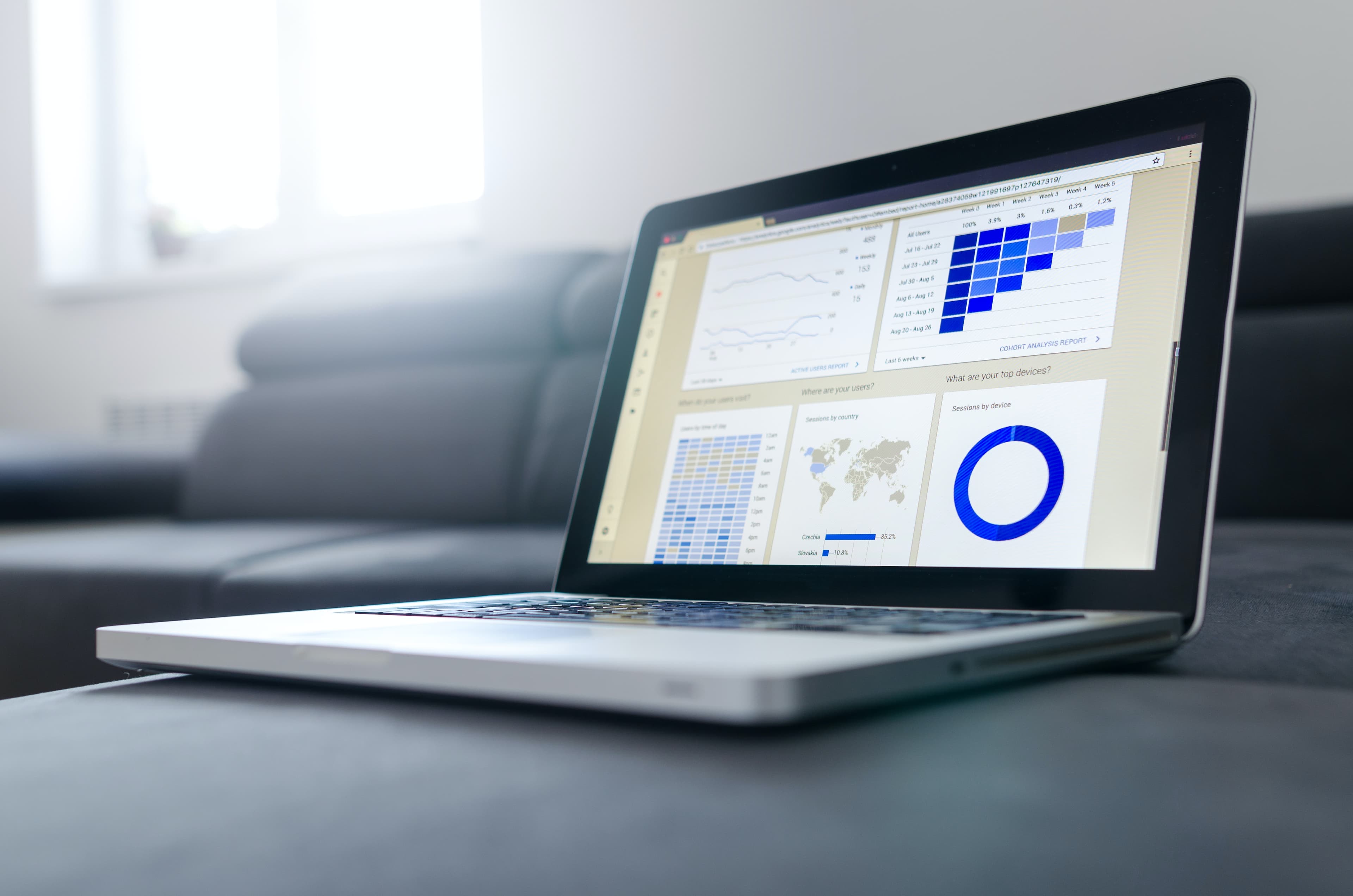
Optimizing Your BigCommerce Store for Better Performance and Conversions
If you’re looking to take your BigCommerce store to the next level, there’s no better place to start than with optimization. In today's business landscape, consumers demand speedy load times, intuitive interfaces, and seamless checkout processes – and if your store doesn't deliver, you risk losing valuable customers to the competition. By prioritizing optimization, you can create a seamless, intuitive shopping experience that keeps your customers coming back for more.
Understanding the Importance of Optimization
First, it’s important to understand why optimization is crucial for any online store. When your website is slow to load or difficult to navigate, customers are likely to become impatient and abandon your store altogether. This not only hurts your conversion rates but also damages your brand reputation. On the other hand, when your store is optimized for performance, you can expect to see increased sales, customer loyalty, and overall satisfaction.
Performance and Conversion Rates
Performance and conversion rates go hand in hand. The longer it takes your store to load, the higher your bounce rate will be. This means fewer customers will make it to your product pages, reducing your chances of making a sale. By optimizing your store for performance, you can speed up load times, reduce bounce rates, and ultimately increase your conversion rates.
But how exactly does optimization improve performance? There are several factors at play. One of the most important is the size of your website's files. Large files, such as images and videos, can slow down load times significantly. By compressing these files and optimizing them for the web, you can reduce their size without sacrificing quality.
Another important factor is your website's code. Bloated, inefficient code can slow down your website and make it more difficult for search engines to crawl. By streamlining your code and removing unnecessary elements, you can improve your website's performance and make it easier for search engines to index.
User Experience and Customer Retention
Another important consideration when it comes to optimization is the overall user experience. When customers enjoy navigating your store and finding what they need with ease, they’re more likely to return in the future. This creates a cycle of customer retention, where satisfied shoppers continue to make purchases and recommend your store to others. On the other hand, a poorly optimized store can leave customers feeling frustrated and unlikely to return.
One way to improve user experience is to optimize your website's navigation. Make sure your menu is easy to use and well-organized, with clear categories and subcategories. You should also make sure your search function is prominent and easy to use, so customers can quickly find what they're looking for.
Another important consideration is mobile optimization. More and more customers are shopping on their mobile devices, so it's crucial that your website is optimized for smaller screens. This means using responsive design, which automatically adjusts your website's layout and content to fit the screen size of the device being used.
Overall, optimization is crucial for any online store that wants to succeed in today's competitive market. By improving performance and user experience, you can increase your conversion rates, retain more customers, and build a strong brand reputation.
Analyzing Your BigCommerce Store's Current Performance
Before you can begin optimizing your store, it’s important to get a sense of its current performance. There are several tools you can use to analyze your store’s performance, including BigCommerce’s built-in analytics.
BigCommerce’s analytics tool allows you to track a variety of metrics, including sales, traffic, and conversion rates. By regularly monitoring these metrics, you can gain valuable insights into how your store is performing and identify areas for improvement.
One important metric to track is bounce rate, which measures the percentage of visitors who leave your site after viewing only one page. A high bounce rate can indicate that your site is slow to load or difficult to navigate, which can negatively impact your sales.
Identifying Areas for Improvement
Once you have a sense of your store’s performance, it’s time to identify areas for improvement. Common areas to address include page load times, mobile responsiveness, and checkout flow. By focusing on these areas, you can begin making targeted improvements that will have a significant impact on your store’s overall performance.
Page load times are a critical factor in determining your site’s overall performance. Slow load times can lead to frustrated customers and lost sales. To improve load times, consider optimizing images, reducing the number of HTTP requests, and leveraging browser caching.
Mobile responsiveness is another important area to address. With more and more customers using their mobile devices to shop online, it’s essential that your site is optimized for mobile. This means ensuring that your site is easy to navigate on a small screen and that all content is easily accessible.
Finally, checkout flow is a crucial component of your store’s performance. A complicated or confusing checkout process can lead to abandoned carts and lost sales. To optimize your checkout flow, consider simplifying the process, offering guest checkout, and minimizing the number of steps required to complete a purchase.
Utilizing BigCommerce Analytics
BigCommerce analytics can give you valuable insights into your store’s performance, such as which pages are slow to load or which products are most popular. By leveraging this information, you can make informed decisions about where to focus your optimization efforts.
For example, if you notice that a particular product is consistently popular, you may want to consider featuring it more prominently on your site or offering promotions to encourage sales. Similarly, if you notice that certain pages are slow to load, you may want to optimize these pages to improve load times and reduce bounce rates.
Overall, by regularly analyzing your store’s performance and making targeted improvements, you can optimize your BigCommerce store for success and drive more sales and revenue.
Improving Your Store's Loading Speed
One of the most important factors in your store’s performance is its loading speed. A fast loading website can improve user experience, reduce bounce rates, and increase conversions. Here are a few tips for optimizing your store’s loading times:
Optimizing Images and Media Files
Images and other media files can be a major drain on your store’s loading times. Large images and unoptimized media files can slow down your site and make it difficult for users to navigate. By optimizing images for the web and minimizing file sizes, you can speed up your site and improve overall performance. Use image compression tools like TinyPNG or JPEGmini to reduce file sizes without sacrificing quality. You can also consider lazy loading images, which means that images will only load when they are in the user’s viewport, reducing the initial load time.
Minimizing HTTP Requests
HTTP requests can also slow down your site’s loading times. Each time a user visits your site, their browser makes a request for each file needed to display the page. This includes images, scripts, and stylesheets. By reducing the number of requests your site makes, you can speed up load times and improve performance. Combine multiple CSS and JavaScript files into one file, use CSS sprites to combine multiple images into one file, and remove any unnecessary files or plugins that are not being used on your site.
Leveraging Browser Caching
Browser caching can help speed up your site by storing frequently accessed files locally on users’ devices. By leveraging browser caching, you can reduce load times and improve overall performance. When a user visits your site for the first time, their browser will download all the necessary files to display the page. With browser caching, the browser will store these files locally so that the next time the user visits your site, the files will already be downloaded and the site will load faster. You can set the expiration time for cached files to ensure that users are always seeing the most up-to-date content.
By implementing these tips, you can improve your store’s loading speed and provide a better user experience for your customers. A faster loading site can lead to increased engagement, higher conversion rates, and ultimately, more sales for your business.
Enhancing Your Store's User Experience
As an online store owner, you should always strive to provide your customers with the best possible experience. Apart from optimizing your store's performance, you should also focus on enhancing its user experience. Here are a few tips that can help you improve your store's usability:
Streamlining Navigation and Site Structure
When it comes to online shopping, customers expect to find what they're looking for quickly and easily. To meet this expectation, you should streamline your site's navigation and site structure. This can involve simplifying menus, consolidating pages, and organizing content in a logical way. By doing this, you can help customers find the products they need in just a few clicks.
Moreover, a well-organized site structure can also improve your store's search engine optimization (SEO) performance. Search engines like Google prefer sites that are easy to navigate and understand. By optimizing your site's structure, you can help search engines crawl and index your pages more efficiently, which can lead to higher rankings and more traffic.
Implementing Responsive Design
With the rise of mobile devices, having a mobile-friendly website is no longer an option, but a necessity. Responsive design is a web design approach that aims to provide an optimal viewing experience across a wide range of devices and screen sizes. By implementing responsive design, you can ensure that your site looks and functions well on desktops, laptops, tablets, and smartphones.
Responsive design can also improve your store's conversion rates. According to a study by Google, 61% of users are unlikely to return to a mobile site they had trouble accessing, and 40% will visit a competitor's site instead. By providing a seamless mobile experience, you can reduce bounce rates and increase customer loyalty.
Simplifying the Checkout Process
The checkout process is a critical part of the customer journey, and it can make or break a sale. A complicated or confusing checkout process can lead to cart abandonment and lost revenue. To prevent this, you should simplify your checkout process as much as possible.
One way to do this is by offering a guest checkout option. Many customers are reluctant to create an account before making a purchase, especially if they're in a hurry. By allowing them to check out as a guest, you can remove this barrier and encourage more sales.
You should also make sure that your checkout forms are clear and easy to understand. Use labels and placeholders to indicate what information is required, and avoid asking for unnecessary details. The easier it is for customers to complete the checkout process, the more likely they are to make a purchase.
By following these tips, you can create a user-friendly online store that meets the needs and expectations of your customers. Remember, a positive user experience can lead to increased sales, customer loyalty, and brand advocacy.
Boosting Your Store's SEO
In addition to performance and usability optimization, it’s also important to focus on search engine optimization (SEO). Here are a few tips for improving your store’s SEO:
Conducting Keyword Research
By researching popular keywords related to your products and updating your content accordingly, you can improve your store’s search engine rankings and visibility.
Optimizing Product Descriptions and Metadata
Make sure your product descriptions, metadata, and other content are optimized for search engines. This can include adding relevant keywords, formatting text correctly, and ensuring your site is crawlable.
Building Quality Backlinks
Backlinks to your store from reputable sources can help improve your search engine rankings and increase your visibility. Look for opportunities to build quality backlinks through guest posting, sponsorship, and other strategies.
Final Thoughts
Overall, optimizing your BigCommerce store is an important step in improving your performance and driving conversions. By focusing on performance, usability, and SEO, you can create a store that’s not only fast and intuitive but also ranks well in search engine results. With these tips in mind, you’ll be on your way to creating a top-performing BigCommerce store that keeps your customers coming back for more.
Nitro Logistics Team
Logistics Expert
The Nitro Logistics team brings together decades of experience in logistics, fulfillment, and supply chain optimization.
Stay Updated
Get the latest insights in logistics and fulfillment delivered to your inbox.


